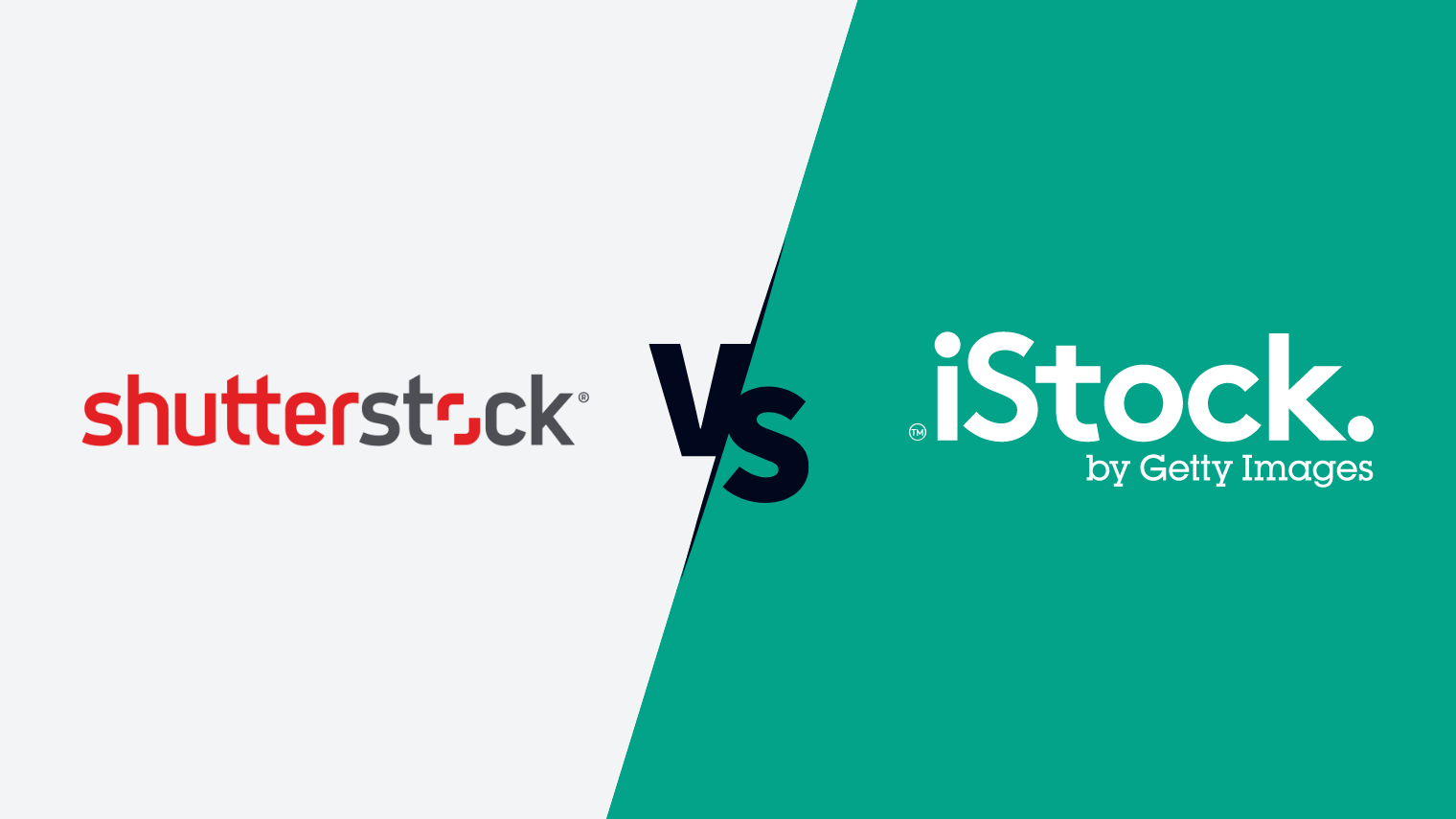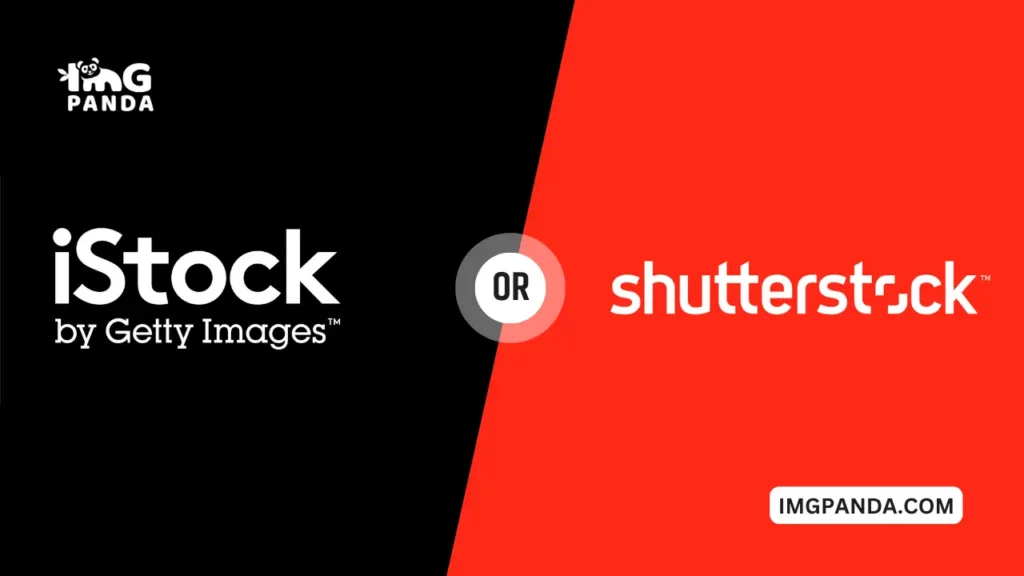Introduction
In today's digital age, stock photography platforms play a vital role in meeting the creative needs of individuals and businesses worldwide. iStock and Shutterstock are two prominent platforms that offer a vast collection of high-quality images, illustrations, and vectors. However, when it comes to choosing the right platform for your creative endeavors, it's important to understand the similarities and differences between iStock and Shutterstock.
This blog post aims to compare and evaluate these two platforms, helping you make an informed decision based on your unique creative needs. By examining factors such as image quality, pricing, contributor opportunities, user experience, and support, we'll delve into the question of which platform is better suited for your creative journey: iStock and Shutterstock? Let's explore the features and offerings of both platforms to find out.
Also Read This: From Photos to Vectors: Maximizing Yay Images’ Diverse Offerings
Understanding iStock and Shutterstock
Before delving deeper into the comparison, let's gain a better understanding of iStock and Shutterstock individually.
iStock:
- iStock, a subsidiary of Getty Images, is one of the oldest and most renowned stock photography platforms.
- It offers a diverse range of high-quality images, illustrations, videos, and audio files for creative projects.
- iStock's library consists of millions of curated assets contributed by a global community of talented photographers and artists.
- The platform provides flexible purchasing options, including image packs and subscription plans, to cater to various budget and usage needs.
- iStock offers a contributor program where artists can showcase their work and earn royalties for licensed downloads.
Shutterstock:
- Shutterstock is a leading global provider of stock images, footage, music, and editing tools.
- The platform boasts an extensive library of creative assets, featuring millions of images, illustrations, videos, and music tracks.
- Shutterstock caters to a wide range of industries, from advertising and marketing to publishing and design.
- Users can access images through subscription plans or purchase them on-demand, providing flexibility and affordability.
- Similarly, Shutterstock offers a contributor program that allows artists to submit their work and earn royalties on licensed downloads.
Both iStock and Shutterstock have established themselves as go-to platforms for creative professionals, businesses, and individuals seeking high-quality visual content. In the following sections, we will explore various aspects to help you determine which platform aligns best with your specific creative needs.
Also Read This: Creative Solutions: Exploring Shutterstock Studios
Image Quality and Variety
One crucial aspect to consider when choosing a stock photography platform is the quality and variety of the images available. Let's compare iStock and Shutterstock in terms of image quality, diversity of subjects, and artistic styles.
1. Image Quality:
- iStock: Known for its stringent quality standards, iStock ensures that its library comprises high-resolution images with excellent clarity and detail. Their team of curators reviews each submission to maintain a consistent level of quality.
- Shutterstock: Similarly, Shutterstock maintains a high standard of image quality, offering a vast collection of professional-grade visuals. Their content review process ensures that only top-quality images make it into their library.
2. Diversity of Subjects:
- iStock: With its extensive contributor community, iStock offers a diverse range of subjects, covering various themes, concepts, and industries. Whether you need images related to business, travel, lifestyle, or nature, iStock provides a broad selection.
- Shutterstock: Known for its vast collection, Shutterstock excels in offering an extensive variety of subjects. From everyday life to niche topics, their library covers a wide spectrum, catering to different creative projects and requirements.
3. Artistic Styles:
- iStock: iStock features a range of artistic styles, including traditional photography, illustrations, vectors, and more. Artists on iStock bring their unique perspectives and creativity to offer a diverse range of visual styles to choose from.
- Shutterstock: Similar to iStock, Shutterstock showcases an array of artistic styles, allowing you to explore different aesthetics. Whether you prefer clean and modern visuals, bold and vibrant illustrations, or vintage and retro designs, Shutterstock has you covered.
Both iStock and Shutterstock offer high-quality images with a wide variety of subjects and artistic styles. It's important to explore their libraries and assess the style and quality that aligns best with your creative vision. In the next sections, we will dive into pricing, licensing options, contributor opportunities, user experience, and support to further compare iStock and Shutterstock.
[caption id="attachment_185332" align="alignnone" width="1520"] Understanding iStock and Shutterstock[/caption]
Understanding iStock and Shutterstock[/caption]
Also Read This: Mastering Fortiguard Downloader’s URL Filtering
Pricing and Licensing Options
[caption id="attachment_200995" align="alignnone" width="1280"] Pricing and Licensing Options[/caption]
Pricing and Licensing Options[/caption]
When considering iStock and Shutterstock, understanding their pricing models and licensing options is crucial. Let's compare how these platforms handle pricing and licensing to help you make an informed decision.
1. Pricing Models:
- iStock: iStock offers various pricing models to suit different budget and usage needs. They provide image packs that allow you to purchase a set number of credits upfront, which can be used to download images as needed. Additionally, they offer subscription plans that provide a certain number of image downloads per month at a fixed cost.
- Shutterstock: Similarly, Shutterstock offers flexible pricing models. You can choose from subscription plans, which provide a monthly or yearly allowance of image downloads, or purchase images on-demand using credits or a direct payment method.
2. Licensing Options:
- iStock: iStock offers a range of licensing options to meet different usage requirements. They provide Standard Licenses for most creative projects, granting you the rights to use the images in various ways. For more extensive usage, iStock also offers Extended Licenses that provide additional rights and permissions.
- Shutterstock: Shutterstock's licensing options include Standard Licenses for most projects, allowing you to use the images in numerous ways. They also offer Enhanced Licenses, which provide extended usage rights and allow for more commercial applications.
3. Pricing Comparison:
Pricing structures can vary between iStock and Shutterstock. It's important to compare the costs of image packs, subscription plans, and licensing options based on your anticipated usage and budget. Take into account factors such as the number of downloads needed, duration of usage, and any specific licensing requirements for your projects.
Considering your specific needs and budget, carefully evaluate the pricing models and licensing options offered by both iStock and Shutterstock. Take note of any promotional offers or discounts that may be available to further optimize your investment. In the following sections, we will delve into contributor opportunities, user experience, and support to help you make a well-rounded comparison.
Also Read This: Picture-Perfect Partnership: A Guide on How to Become a Getty Images Photographer
Contributor Opportunities and Earnings
[caption id="attachment_201002" align="alignnone" width="1280"] Contributor Opportunities and Earnings[/caption]
Contributor Opportunities and Earnings[/caption]
For individuals interested in contributing their creative work to stock photography platforms, it's essential to assess the opportunities and potential earnings offered by iStock and Shutterstock. Let's compare the contributor programs and earnings potential on these platforms.
1. Contributor Programs:
- iStock: iStock provides a contributor program that allows artists to showcase their work and earn royalties on licensed downloads. Artists can submit their photos, illustrations, videos, and other creative assets for review and inclusion in the iStock library. The program offers a platform for exposure and recognition among a vast user base.
- Shutterstock: Similarly, Shutterstock offers a contributor program where artists can submit their images, videos, illustrations, and music. Approved submissions become available for customers to license, and contributors receive royalties based on the number of downloads.
2. Earnings Potential:
- iStock: The earnings potential on iStock can vary depending on factors such as the popularity of your content, the number of downloads, and the licensing options chosen by customers. iStock operates on a tiered royalty system, where contributors earn a higher percentage as they achieve higher sales volumes or exclusive contributor status.
- Shutterstock: With Shutterstock, contributors also earn royalties based on the number of downloads their content receives. They offer different levels of earnings based on the contributor's lifetime earnings and the customer's licensing type (subscription or on-demand).
It's important to consider the earning potential, royalty structures, and submission requirements when deciding which platform aligns best with your goals as a contributor. Research and compare the experiences and reviews of contributors on iStock and Shutterstock to get insights into the earnings potential and support provided to artists.
Also Read This: How Shutterstock Protects Your Copyrighted Work and Ensures Security
User Experience and Interface
[caption id="attachment_201009" align="alignnone" width="1280"] User Experience and Interface[/caption]
User Experience and Interface[/caption]
A seamless user experience and intuitive interface are crucial factors to consider when choosing between iStock and Shutterstock. Let's explore the user experience, interface, and usability of both platforms.
1. User-Friendly Interface:
- iStock: iStock offers a user-friendly interface that makes it easy to search for and discover images. The platform provides various search filters, categories, and keyword suggestions to help you find the right visuals for your projects. The layout is designed to provide a smooth browsing experience and efficient navigation through the library.
- Shutterstock: Similarly, Shutterstock is known for its intuitive interface, making it simple to search and explore their extensive collection. The platform offers advanced search options, including filters for orientation, color, and image type, allowing you to refine your search results. The layout and organization of the site contribute to a user-friendly experience.
2. Licensing and Download Process:
- iStock: iStock provides a straightforward licensing and download process. Once you find the desired image, you can easily select the appropriate licensing option and download the file directly. The platform offers various file formats and sizes to ensure compatibility with different creative projects.
- Shutterstock: Shutterstock also streamlines the licensing and download process. After selecting the desired image, you can choose the appropriate license and download the file instantly. The platform provides different resolution options to accommodate your specific needs.
3. Mobile Experience:
- iStock: iStock offers a mobile app for both iOS and Android platforms, allowing users to browse and download images on the go. The app provides a simplified version of the website's features, making it convenient for users to access and manage their content.
- Shutterstock: Similarly, Shutterstock offers a mobile app for iOS and Android devices, providing a seamless mobile experience. The app allows users to search, download, and manage their licensed content easily, making it a valuable tool for creatives on the move.
Considering the importance of user experience and interface, it's recommended to explore the platforms' websites and test their search functionalities to get a feel for how they suit your workflow and preferences.
Support and Resources
[caption id="attachment_201014" align="alignnone" width="1500"] Support and Resources[/caption]
Support and Resources[/caption]
Having reliable support and access to helpful resources is essential when using stock photography platforms like iStock and Shutterstock. Let's compare the support options and available resources provided by both platforms.
Support Channels:
- iStock: iStock offers various support channels, including a comprehensive Help Center that provides articles, FAQs, and guides to assist users. They also offer customer support through email and a dedicated contributor support system for artists.
- Shutterstock: Similarly, Shutterstock provides a Help Center with a wide range of resources, including FAQs, tutorials, and guides to address common queries. They offer customer support via email and a dedicated contributor support system.
Contributor Resources:
- iStock: iStock provides a range of resources for contributors, including guidelines for content submission, best practices, and tips to improve visibility and sales. They offer educational materials and webinars to help contributors enhance their skills and optimize their portfolios.
- Shutterstock: Shutterstock offers resources for contributors as well, such as submission guidelines, best practices, and tips to maximize the visibility of their content. They also provide educational resources and tutorials to support contributors in improving their skills and increasing their earnings.
3. Community and Forums:
Both iStock and Shutterstock have active contributor communities and forums where artists can connect, share insights, and seek advice from fellow contributors. These platforms offer opportunities to learn from experienced artists and engage with a supportive community.
Considering the availability of support channels, resources, and community engagement, assess which platform offers the level of support and guidance that aligns with your needs as a user or contributor. Access to helpful resources and prompt support can significantly enhance your experience on the platform.
Feedback and Reviews
Gathering feedback and considering reviews from users and contributors can provide valuable insights when deciding between iStock and Shutterstock. Let's explore the importance of feedback and reviews in evaluating these platforms.
1. User Feedback:
Consider reading user reviews and testimonials from individuals who have used iStock and Shutterstock. Look for feedback related to factors such as image quality, pricing, licensing, user experience, and customer support. This feedback can give you a sense of the overall satisfaction and experiences of users on each platform.
2. Contributor Reviews:
Take into account the reviews and experiences shared by contributors on iStock and Shutterstock. Look for insights regarding earnings potential, submission process, support, and overall satisfaction as a contributor. Understanding the experiences of fellow artists can help you assess the suitability of each platform for your creative contributions.
3. Independent Comparisons:
Explore independent comparisons and reviews from reputable sources that have analyzed and compared iStock and Shutterstock. These reviews often provide comprehensive assessments of various aspects, including image quality, pricing, licensing options, user interface, and support. Pay attention to the key points highlighted in these comparisons to gain a well-rounded perspective.
While gathering feedback and reviews, keep in mind that individual experiences can vary, and it's essential to consider multiple perspectives. Look for common themes and patterns in the feedback to form an informed opinion.
Conclusion
Choosing the right stock photography platform for your creative needs is an important decision. In this blog post, we have explored the key factors to consider when deciding between iStock and Shutterstock. Let's summarize the main points discussed throughout the post:
- Understanding iStock and Shutterstock: Gain an understanding of the platforms' backgrounds, reputation, and user base to determine their suitability for your creative projects.
- Image Quality and Variety: Assess the quality and variety of images available on both platforms to ensure they align with your creative vision.
- Pricing and Licensing Options: Compare the pricing models and licensing options offered by iStock and Shutterstock to determine which best suits your budget and project requirements.
- Contributor Opportunities and Earnings: Consider the contributor programs and earnings potential on each platform if you plan to contribute your own creative work.
- User Experience and Interface: Evaluate the user-friendliness of the platforms' interfaces, search functionalities, and mobile experiences to ensure a smooth and efficient workflow.
- Support and Resources: Consider the available support channels, resources, and community engagement offered by iStock and Shutterstock to facilitate your experience as a user or contributor.
- Feedback and Reviews: Gather feedback and reviews from users and contributors to gain insights into their experiences and overall satisfaction with the platforms.
By carefully considering these factors and conducting thorough research, you can make an informed decision that aligns with your creative needs, budget, and goals.
